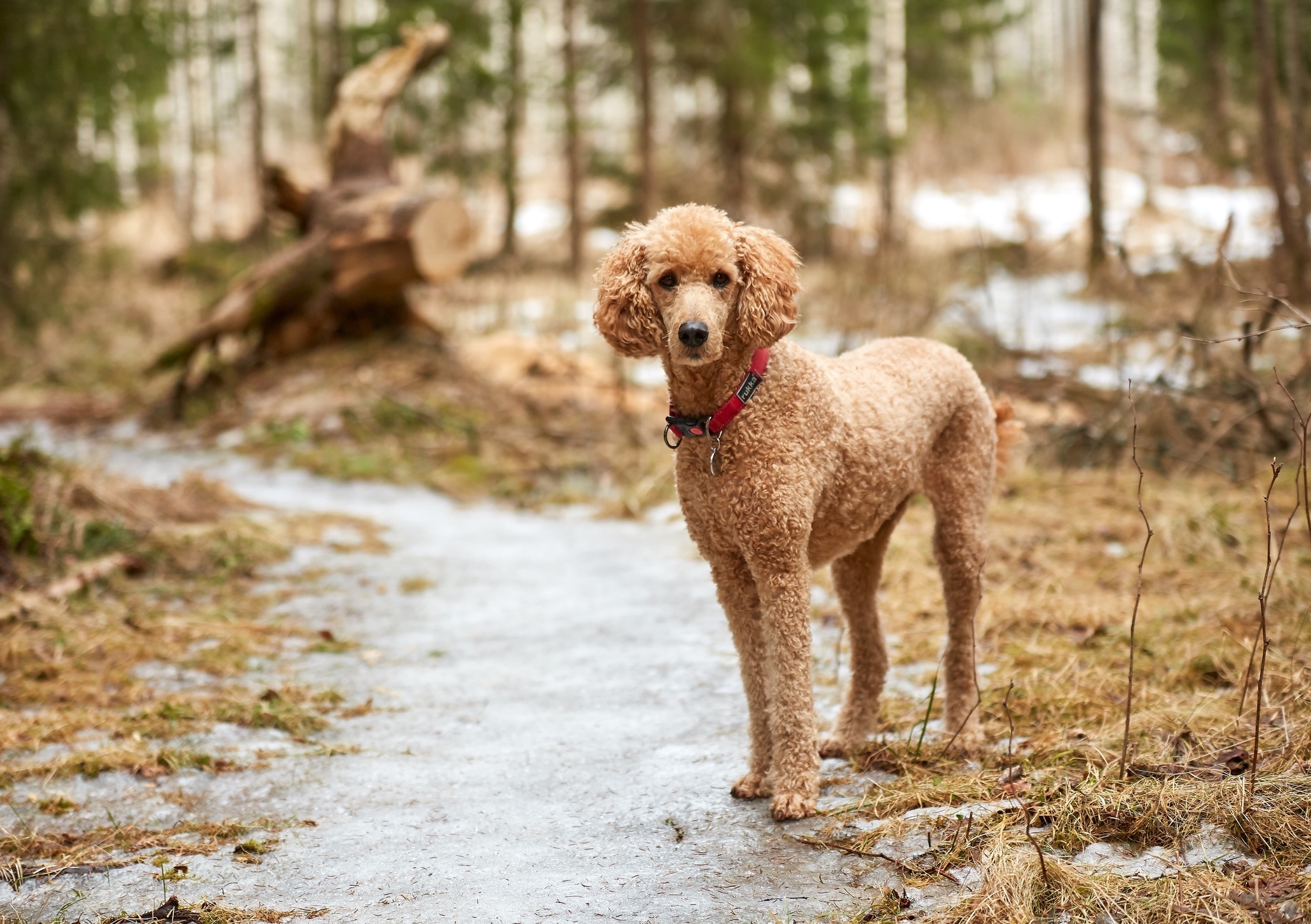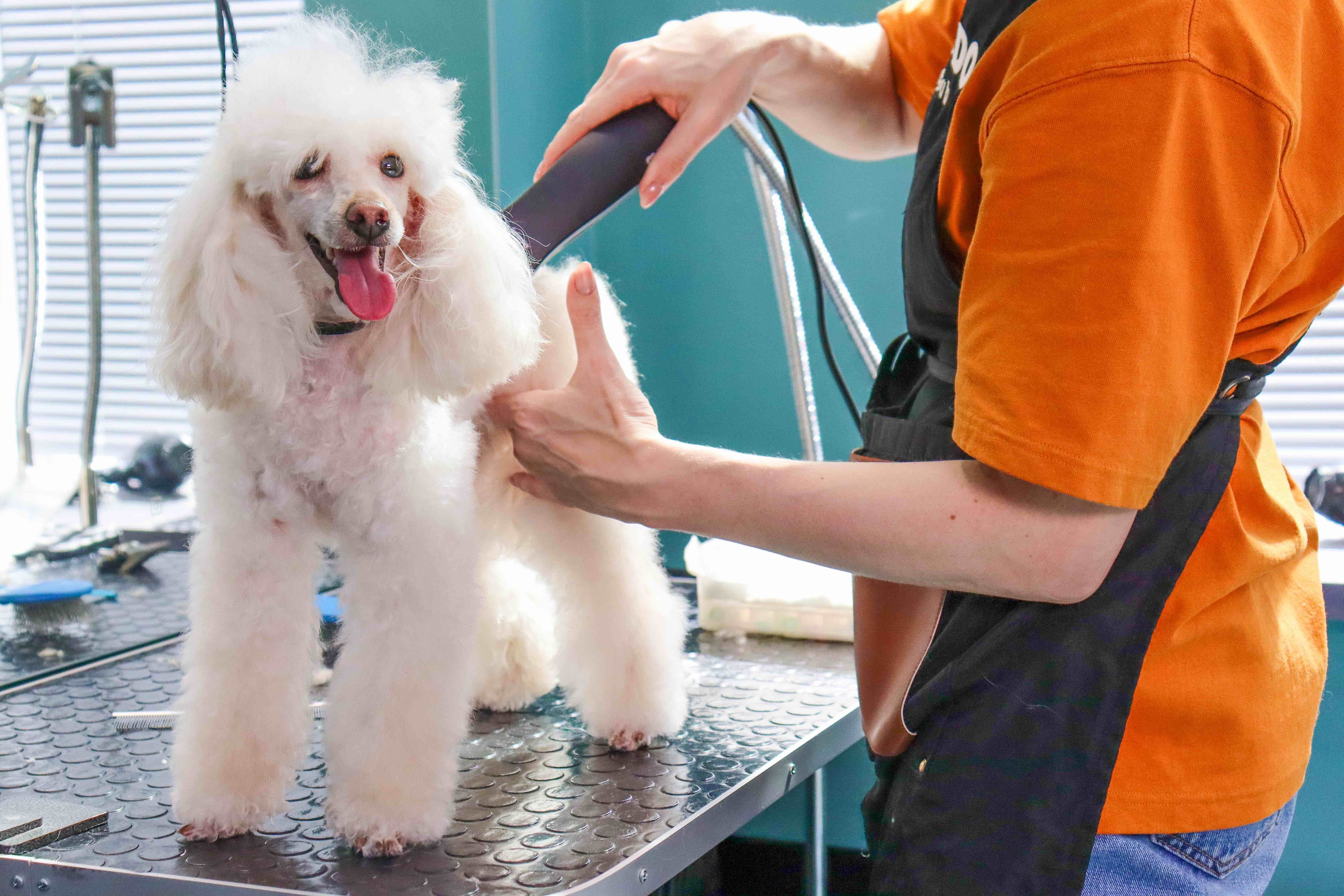The 3 Types of Poodles and How They Compare
Known for their intelligence, elegance, and so-called "hypoallergenic" coat, Poodles are one of the most popular dog breeds. But there’s more than one type of Poodle. The dogs come in three sizes: Standard, Miniature, and Toy. All originated as hunting dogs in Germany, and the Poodle is now recognized as the national dog of France.
So how do these three different types of Poodles compare? Here’s what to know about the different variations of this breed.
Standard Poodles: The Original Poodle

The Standard Poodle is the largest—and first—Poodle. Originally bred as water retrievers, they were used for hunting and retrieving game. Standard Poodles make excellent family pets due to their friendly temperament and outgoing personality. They are highly trainable and excel in various dog sports, such as obedience, agility, and tracking.
This type of Poodle stands at least 15 inches tall and weighs 40–70 pounds. Caring for a Standard Poodle means keeping up with regular grooming, as their distinctive curly coat can become matted. There are also a number of health issues associated with Standard Poodles, including hip dysplasia, progressive retinal atrophy (PRA), and bloat.
Vet Recommended Health Support
Miniature Poodles: The Perfect Apartment Companion

Miniature Poodles share many characteristics with the Standard Poodle; they, too, are known for their intelligence, trainability, and friendliness. This temperament, and their manageable size, makes Mini Poodles a good fit for families and apartment living.
Miniature Poodles were bred down from Standards; they are 10–15 inches tall and 10–15 pounds. Just like their larger counterparts, Mini Poodles have a curly coat that comes in all kinds of colors and requires regular grooming.
Health-wise, Miniature Poodles have a high incidence of hip dysplasia, patellar luxation, and eye conditions such as cataracts and PRA. To avoid these and other genetic health issues, choose a reputable breeder who tests their breeding dogs.
Toy Poodles: The Smallest of the Poodle Types

At just 4–6 pounds, the Toy Poodle is the smallest type of Poodle and stands no more than 10 inches tall. Toy Poodles were bred down from Standards and Minis in the 20th century to serve as companion dogs. Because of this, their temperament is similar to other Poodles, just in a much smaller size. As a family pet, this small dog is intelligent, trainable, and makes an excellent companion.
As with Standard and Miniature Poodles, Toys have a curly coat that needs regular grooming. Patellar luxation, dental problems, and eye diseases such as PRA and cataracts are common health issues in Toy Poodles.
What About Teacup Poodles?
The term “teacup Poodle” term refers to extremely small Poodles. No major kennel clubs recognize the teacup Poodle, or any teacup-sized breed, because of concerns about health and welfare. Teacup breeding practices prioritize creating the smallest possible dog instead of a healthy dog. This can produce health issues ranging from fragile bones to dental problems to organ failure.
No major kennel clubs recognize the teacup Poodle, or any teacup-sized breed, because of concerns about health and welfare.
Reputable Poodle breeders will not breed teacup Poodles. It’s important to be cautious when dealing with breeders who advertise teacup Poodles, as they may not put their animals’ health as the top priority. Ask them questions about their breeding practices and health testing.
Standard Poodles vs. Miniature Poodles vs. Toy Poodles
While Standard, Miniature, and Toy Poodles share many similarities (such as their intelligence and curly coat), there are important differences between them. Here are some top considerations between the Poodle sizes:
|
Type of Poodle |
Standard |
Miniature |
Toy |
|
Height |
15+ inches |
10–15 inches |
Less than 10 inches |
|
Weight |
40–70 pounds |
10–15 pounds |
4–6 pounds |
|
Health Conditions |
Hip dysplasia, bloat, PRA |
Hip dysplasia, patellar luxation, cataracts, PRA
|
Patellar luxation, dental disease, cataracts, PRA |
|
Activity Level |
Requires one to two hours of daily exercise (swimming, walking, hiking, running) |
Requires 30–60 minutes of daily exercise (swimming, walking, short runs, playing fetch, obstacle courses) |
Requires 30–45 minutes of daily exercise (swimming, walking, playing fetch) |
|
Barking Level |
Infrequent |
Frequent |
Frequent |
|
Lifespan |
12–15 years |
13–15 years |
12–18 years |
Choosing the Right Poodle for You
When choosing among the types of Poodles, consider your lifestyle and what you’re looking for in a furry companion. Ask yourself a few questions before bringing home a Poodle puppy:
-
How much time am I willing to spend exercising a dog every day?
-
What types of activities do I want to do with my dog?
-
Do I have the budget to keep up with a Poodle’s grooming needs?
-
What is my monthly budget for food? (Standard Poodles will eat much more than Toy Poodles.)
-
Is my living situation more suitable for a highly active large dog or a moderately active smaller pup?
All Poodles, no matter their size, need to be socialized as puppies, fed a nutritious dog food, and trained with positive reinforcement. Choosing the best Poodle for your family can only be accomplished by doing your research and finding a reputable breeder who can help you select the right dog.
Featured image: patrickheagney/E+ via Getty Images
